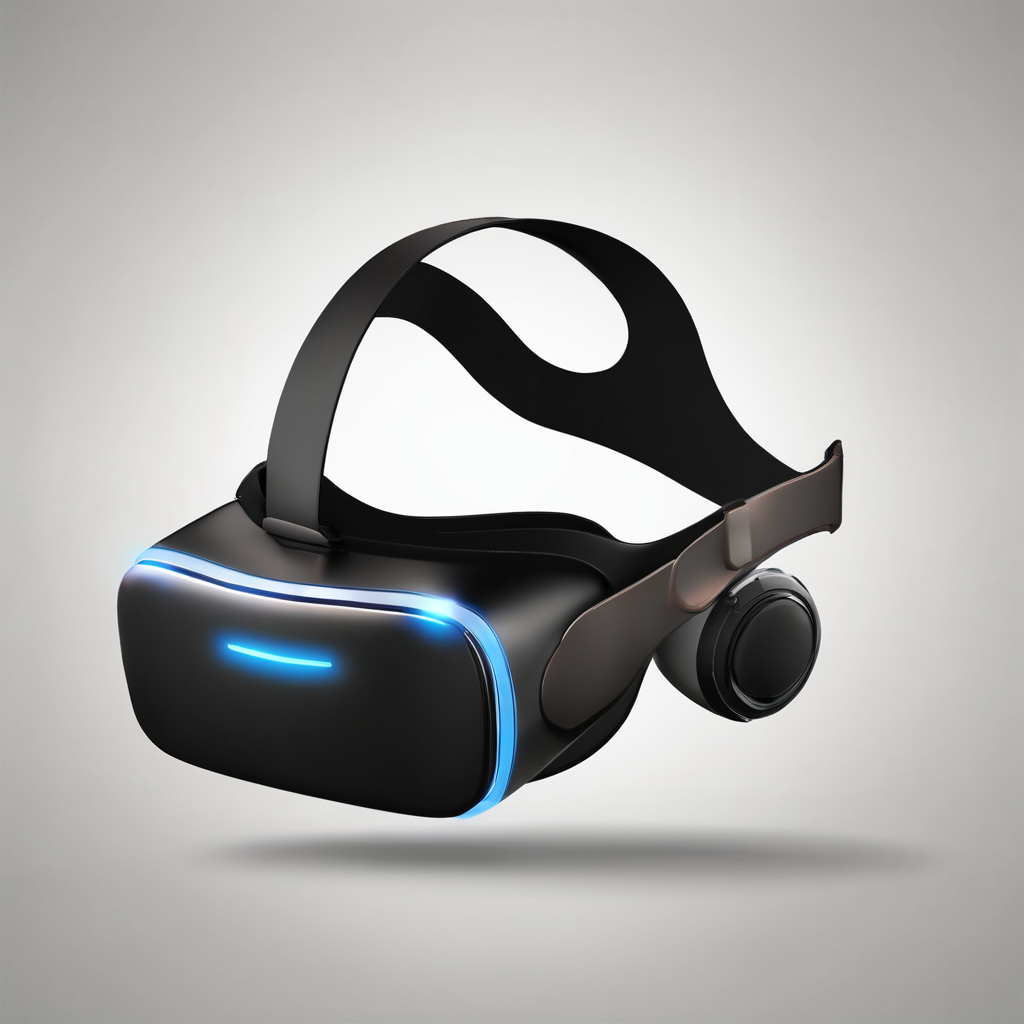In today’s digital age, smart lighting has become an essential part of any smart home. By integrating smart light bulbs, switches, and control systems, you can enhance your home’s ambiance, improve energy efficiency, and enjoy the convenience of controlling your lights from your smartphone. Whether you’re new to the concept of smart lighting or looking to upgrade your existing setup, this guide will help you understand how to set up a smart lighting system at home using your smartphone.
Understanding Smart Light Bulbs and Their Benefits
Smart light bulbs are an innovative addition to home lighting, offering a host of benefits over traditional bulbs. These smart bulbs come equipped with wireless connectivity, allowing you to control them remotely using your smartphone or voice commands through popular virtual assistants like Google Home. A standout feature of smart bulbs is their ability to change colors, dim, or turn on and off according to set schedules.
In the same genre : What Are the Methods to Utilize Smartphones for Real-Time Weather Forecasting?
Unlike conventional bulbs, smart light bulbs enable you to customize your lighting to suit various activities and moods. Imagine setting your lights to a relaxing warm tone for a movie night or a bright white for focused work. Moreover, smart bulbs are energy-efficient, often utilizing LED technology that reduces electricity consumption and extends the lifespan of the bulbs.
To get started, you’ll need to purchase smart bulbs compatible with your existing fixtures. Popular brands like Philips Hue offer a range of options, from simple white bulbs to advanced color-changing varieties. Ensure that your chosen smart bulbs are compatible with your preferred control method, whether it’s through a dedicated app, voice control, or a smart home hub like Google Home.
Also to discover : What Are the Steps to Create Augmented Reality Experiences Using Your Smartphone?
Once you’ve selected your smart bulbs, installing them is a straightforward process. Simply replace your existing light bulbs with the smart ones, download the necessary app, and follow the on-screen instructions to pair the bulbs with your home Wi-Fi network. The app will guide you through setting up various features, such as grouping bulbs by room, creating lighting schedules, and adjusting brightness levels.
By integrating smart light bulbs into your home lighting system, you can enjoy a seamless and customizable lighting experience that enhances your everyday life.
Installing Smart Switches for Enhanced Control
Smart switches are a versatile addition to your smart home setup, providing enhanced control over your lighting system. Unlike smart bulbs, which are individually controlled, smart switches allow you to manage entire circuits of lights with a single device. This makes them an ideal solution for rooms with multiple light fixtures or for controlling hard-to-reach lights.
When choosing smart switches, consider factors such as compatibility with your electrical system, ease of installation, and integration with your smart home ecosystem. Leading brands like Philips Hue, Lutron, and TP-Link offer a variety of smart switches designed to work seamlessly with major smart home platforms, including Google Home.
Installing smart switches typically involves replacing your existing wall switches with the new smart versions. While the process is relatively straightforward, it does require some basic electrical knowledge and tools. If you’re not comfortable working with electrical wiring, it’s advisable to hire a professional electrician to ensure a safe and successful installation.
Once installed, smart switches can be controlled using your smartphone, voice commands, or even preset schedules. This allows you to automate your lighting system based on your daily routines, such as turning on the lights when you wake up or dimming them in the evening for a cozy atmosphere. Additionally, smart switches can be used to create scenes that combine multiple lighting settings, providing a tailored ambiance for different activities.
For example, you can set up a “Movie Night” scene that dims the lights in your living room and turns off the overhead lights, creating the perfect environment for watching a film. Alternatively, a “Good Morning” scene can gradually brighten your bedroom lights to help you wake up naturally.
By incorporating smart switches into your home lighting system, you can achieve a higher level of control and convenience, transforming the way you interact with your lights.
Using Apps to Control Your Smart Lighting System
Controlling your smart lighting system with a dedicated app offers a level of convenience and flexibility unmatched by traditional lighting solutions. These apps, available on both Android and iOS, act as the central hub for managing your smart bulbs, switches, and other connected devices.
Upon installing the app provided by your smart lighting manufacturer—be it Philips Hue, LIFX, or another brand—you’ll gain access to a range of features designed to simplify and enhance your lighting experience. These apps typically allow you to group lights by room, set schedules, adjust brightness, and change colors with just a few taps on your smartphone.
One of the standout features of using an app is the ability to automate your lighting based on your daily routines. For instance, you can set your lights to turn on gradually in the morning to mimic a sunrise, helping you to wake up more naturally. Conversely, you can schedule your lights to dim or turn off at bedtime, promoting a better night’s sleep.
Voice control, another powerful feature, integrates seamlessly with virtual assistants like Google Home and Amazon Alexa. By linking your smart lighting app with these platforms, you can issue voice commands to control your lights, making everyday tasks even more convenient. For example, saying “Hey Google, turn off the living room lights” can save you the trouble of manually flipping a switch.
Geofencing is another innovative feature found in many smart lighting apps. This technology uses your smartphone’s location to trigger actions as you enter or leave your home. Imagine your lights automatically turning on as you arrive home in the evening or turning off when you leave for work in the morning.
Additionally, these apps often come with energy monitoring tools that help you track your electricity usage, providing insights on how to reduce your consumption and save on utility bills. You’ll also find options to customize scenes and routines that match your lifestyle, whether it’s a cozy reading nook or a vibrant party setting.
By leveraging the capabilities of these apps, you can take full control of your home lighting system, tailoring it to fit your preferences and daily schedule.
Integrating Smart Lighting with Other Smart Home Devices
A truly smart home is one where all your devices work together seamlessly, providing a cohesive and efficient living environment. Integrating your smart lighting system with other smart home devices can elevate your home’s functionality and convenience to new heights.
Start by connecting your smart lighting system to a central hub, such as Google Home or Amazon Echo, which acts as the command center for all your smart devices. This integration allows you to create complex automation routines that involve multiple devices working in harmony. For example, you can set your lights to dim automatically when you start playing a movie on your smart TV or have your lights flash when your smart doorbell detects motion.
Smart lighting can also be paired with smart thermostats, such as the Nest Learning Thermostat, to create energy-efficient routines. For instance, you can program your lighting system to turn off when the thermostat detects that no one is home, reducing unnecessary energy consumption.
Security is another area where smart lighting integration shines. By linking your lights with smart security cameras and alarm systems, you can enhance your home’s safety. Set your lights to turn on when motion is detected outside, or create a “vacation mode” that mimics your usual lighting patterns while you’re away, deterring potential intruders.
Voice assistants like Google Home play a crucial role in smart home integration. By using simple voice commands, you can control your lighting and other devices without lifting a finger. This hands-free convenience is particularly beneficial in situations where your hands are full or when you need immediate control, such as turning off the lights before going to bed.
Another innovative use of smart lighting is in conjunction with smart sensors. Motion and occupancy sensors can automatically adjust your lighting based on room occupancy, ensuring that lights are only on when needed. This not only saves energy but also provides a seamless and intuitive lighting experience.
By integrating your smart lighting system with other smart home devices, you can create a synchronized and efficient environment that enhances your daily life and provides unparalleled convenience.
Setting up a smart lighting system at home using your smartphone is a game-changer in modern home living. By selecting the right smart light bulbs and switches, utilizing dedicated control apps, and integrating your lighting with other smart devices, you can transform your home into a more efficient, convenient, and enjoyable space.
Smart lighting not only offers the convenience of remote control and automation but also brings significant benefits in terms of energy efficiency and customization. Whether you’re dimming the lights for a cozy evening or brightening up your workspace, smart bulbs and switches provide the flexibility to tailor your lighting to any situation.
Embrace the future of home lighting by investing in a smart lighting system. The ease of setup, coupled with the wide range of features and integrations, makes it a worthwhile addition to any home. With smart lighting, you can control your lights effortlessly, enhance your home’s ambiance, and enjoy the many benefits of a truly connected smart home.
By following the steps outlined in this guide, you’ll be well on your way to creating a lighting system that not only meets your needs but also exceeds your expectations. Welcome to the era of smart lighting—simplify your life and light up your home with just a tap on your smartphone.











